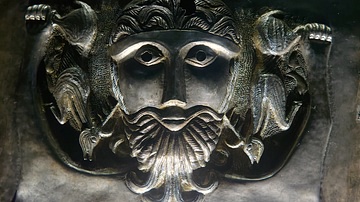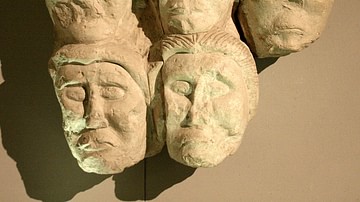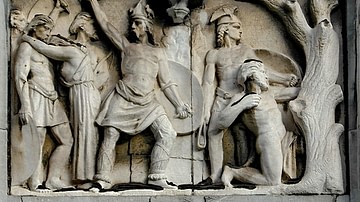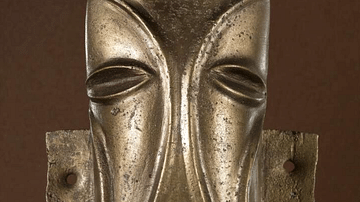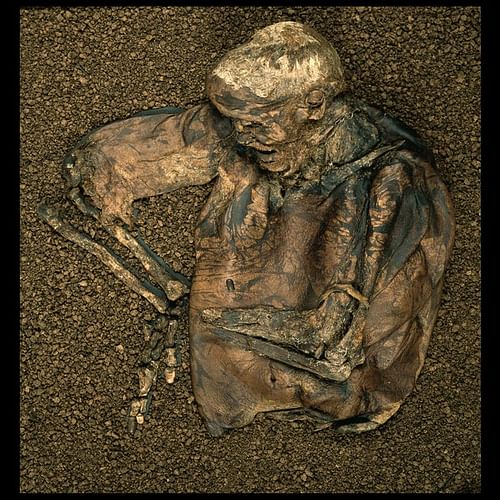
The Lindow Man (officially Lindow III) is the top half of a male body, found preserved in a peat bog in Cheshire, England.
The peat bogs at Lindow Moss date back to the last ice age and were formed by holes of melting ice; they are now a tenth of their original size. Bogs often lead to the preservation of organic materials, particularly human remains, being acidic, cold, and devoid of oxygen. The brown colour of the skin, leathery texture, and appearance of human remains preserved in a bog are due to a type of moss that grows in bogs and when dead, lets out a substance that causes a tanning process.
During 1980s CE a series of finds were made at Lindow Moss by workers at a peat shredding mill (peat was then being harvested as fuel). These discoveries were small parts of the human anatomy, for example, a head known as the Lindow Woman and several limbs of other individuals. The most famous, largest, and important of these discoveries is the top half of a male body (the bottom half possibly lost when a digger cut up the bog) found in the summer of 1984 CE and called the Lindow Man. What is noticeable about this example and significant for study is that the hair, skin, and several of his integral organs were preserved. The body and surrounding section of peat were removed whole and taken away for study by a team led by British Museum scientists. Once safe in a laboratory it was the focus of analysis and has caused a great deal of excitement, producing an unprecedented investigation.
The beard, sideburns, and moustache made it instantly clear that the body was male. By calculating the length of his upper arm bone, it was estimated that he would have been between 1.68 m and 1.73 m tall. He was also well built, weighing around 64 kg. He was radiocarbon dated to between 2 BCE and 119 CE and was about 25 years old at the time of death. He was unclothed, apart from a fox fur armband. Using scanning electron microscopy researchers found that his hair and beard had been trimmed with a pair of scissors or shears. It is thought that he did not do any rough work or hard labour, based on his nails which were all manicured. Although the acid in the bog had removed all of the enamel from his teeth, there were no visible cavities, and what was left looked normal. Overall he appears to have been fairly healthy, but had slight osteoarthritis and an infestation of parasitic worms. It has even been possible to discover his blood group, O. Food residue discovered in his upper alimentary tract shows that his last meal was a griddle cake made from wheat and barley.
The reasons and cause of death have caused debate between scholars. There are signs of two blows to the top of the head with a heavy and bladed weapon and also a knife wound to the throat. There is also evidence for a blow to the back, by a broken rib. He had a thin cord around his neck which may have been used to strangle and break his neck, but some have argued that it was simply a necklace, because it is knotted in a decorative manner. Once dead he was placed face down in the bog. This horrific death may have been a ritual killing, a human sacrifice carried out, perhaps by the Druids. Or he could have been executed as a criminal or murdered by thieves, or if he was someone of stature, by his enemies. It is almost impossible to know for sure why he died, but the Lindow Man has provided valuable information and been subjected to more tests than any other ancient human being.
He was conserved by immersing him in a mixture of polyethylene glycol to prevent shrinking and then wrapped in cling film, frozen, and then finally freeze-dried. He is now on display in the British Museum.
